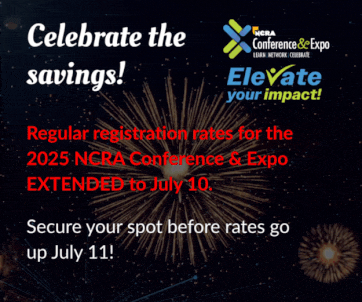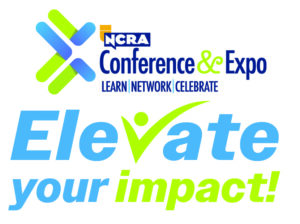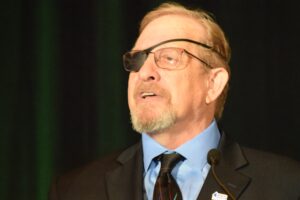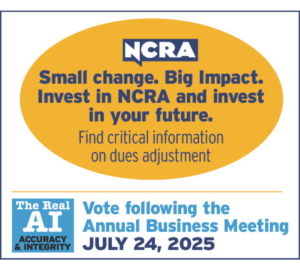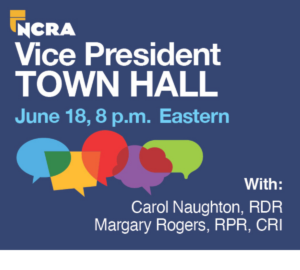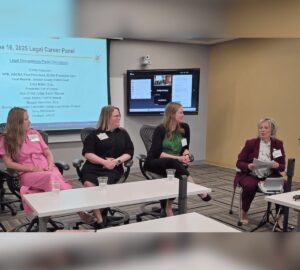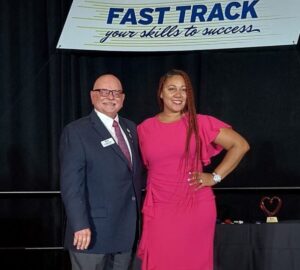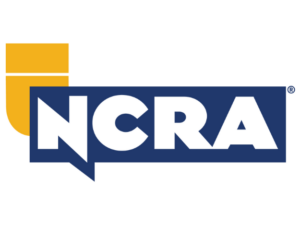By Max Curry

Change is difficult, but some of our greatest opportunities come from change.
A big change in my life occurred the day I left home for Ole Miss, beginning my journey to become a court reporter. It took me three hours to leave because my mother would not stop crying. She told me how proud she was, that she was looking forward to seeing me graduate from college, that her baby was leaving home, and then she would hug me and start crying all over again. It was a vicious cycle.
After two and one-half hours, we made it to my car. After another 30 minutes of advice, love, hugs, and tears, my daddy grabbed my mother in a bear hug and said: “Son, just get in the car and go or you’re never going to make it to college.”
Once in the car, I looked back. While still holding my mother, my dad raised his arm, waved, and said, “Your mother and I love you, and I am so very proud of you, son.” It was one of the few times I saw tears in my daddy’s eyes.
I will admit I was a typical 17-year-old: I knew everything, and my parents knew nothing. I thought: “Thank God I’m getting away from these two dumb people and can finally live my own life!” It took me five years to realize they were the two smartest, most brilliant people I may ever know.
My parents greatly influenced the trajectory of my life. From them I learned to work smart but work hard, to strive for excellence, to serve others, and to pay it forward. When we give back, we leave our world better than we found it. We must care about the collective good as well! The most important values they instilled in me were a sense of community and service to others!
As I left for college, my life was changing; but my parents’ lives were changing too. I was the last to leave home. Suddenly they had to figure out how to do something they hadn’t done since she was 18 and he was 20 — live their lives together without kids and be Roy and Ruth again. My parents fell in love all over again.
Life is full of change, and change can be good.
But today we must consider the court reporting and captioning industries and what change means for our future. In the past three to four years, our industry has seen great change — particularly in the last year. Change that happens that fast can be scary and seem out of control — but it only seems that way, mainly because as a species we are hardwired to resist change, even to struggle against it.
Our industry is over 100 years young. We have survived and thrived because of that word: Change. As change happened, we have not run from it; we have embraced it and evolved. Our theories evolved from short vowels only to long and short vowels, making our writing more efficient with CAT systems. Then came realtime, and we could provide instantaneous feedback for clients. The first realtime systems were IT labor intensive. We now offer realtime output to iPads and other smart devices, removing the difficult IT process for us and for our consumers. Many reporters and captioners fear some of the changes in our industry, whether it is other methods of reporting or the business approaches of companies and how they integrate other methodologies. And, then, outside influences affect the industries.
While I recognize the dangers and challenges, every day I make the conscious decision to face them head on, to embrace the light, to have a positive outlook, and to work toward constructive solutions that yield results for our industry! I encourage you to do so as well, for darkness is an absence of light, but the truest darkness is the belief that the light will never return. Our light still shines brightly.
My commitment to you as NCRA President is to work tirelessly, to make my presidency count, to work with this Board and other industry leaders to find solutions to the great challenges we face! Some of the smartest people I know are on this Board or are involved in our industry through NCRA staff or other industry leaders affiliated with NCRA. We will find the solutions working together!
Some of these solutions are already in the queue: NCRA 2.0’s commitment to looking at all our processes to ensure we function intelligently and efficiently; the NCRA A to Z™ Intro to Steno Machine Shorthand program addresses our student shortage, and my goal to work with reporter volunteers and state association leaders to implement the program in all 50 states this year, putting us on a clear path to eliminating our reporter shortage in the next several years; as a second step, to engage a marketing firm, much as the nurses did in the 1980s, to update the public image of stenographers and help the public to fully understand what we do and the opportunities in a reporting or captioning career; and our commitment to transparency by opening all the doors and windows of NCRA, offering our Board meetings for members viewing via Zoom. And we are going to do so much more!
I want to thank StenoCAT for their collaboration with my predecessor, Sue Terry, FAPR, RPR, CRR, CRC, and NCRA by redeveloping their steno app for the iPad. This allow us to economically have steno writer keyboards available so we can roll out our NCRA A to Z program without a shortage of machines being a hindrance. I also want to recognize the teams at Stenograph and ProCAT for providing student writers for the program as well. We are having remarkable success with the online program already thanks to these folks! Thank you, StenoCAT, Stenograph, and ProCAT — and your amazing support staffs! With our volunteers and our vendors working together, we are going to cure our shortage and profession image issues in short order.
Many people fear automatic speech recognition (ASR) and its key component, which is artificial intelligence (AI). It threatens our captioning siblings more than judicial reporting, but the threat is real to both components of our industry. However, while ASR is making advancements with technology, the reality is, so are we.
The technology we rely on has evolved over the years, and it continues to do so today. In the not-so-distant future (perhaps three to five years from now) our CAT systems will include advanced AI chips. Imagine with me for a moment. As a professional stenographer, you show up for court with your writer and laptop and write the proceedings, and advanced AI software in your CAT system will follow behind you. When you hit the period or question mark, AI goes to work. It compares the audio to the words you wrote. When it completes the review and verifies every word is as you wrote it or has made changes where it deems appropriate as verified to the audio, it will then go back and apply both hard-set English rules to the sentence and the more fluid and flexible court reporting English rules. By the time you have completed the next sentence, AI is ready to move on to that sentence and go to work.
At the conclusion of the session, perhaps all day in court with 300 pages, AI will have flagged maybe 30 or 40 things you need to verify. Within 10 to 15 minutes of the end of court, you could complete the transcript and be ready to send it out electronically.
Similarly, a captioner could soon use such advanced AI CAT software tools to provide near perfect captioning.
Imagine: In five years, we could see a world of highly efficient and accurate stenographic writing aided by AI tools providing near instantaneous, highly accurate products to our consumers and clients.
Now, with this system, how would stenographic reporters and captioners possibly be leveraged out of this industry by technology? I would argue the reverse is true: Advanced technology married with the high skillset of a professional stenographic reporter or captioner will make us even more essential in judicial reporting and captioning arenas, practically making ourselves an irreplaceable component.
While many people fear AI, I remind you it is a tool, no different than a hammer or a screwdriver … or a stenographic machine. It benefits and grows our industry, creating for us a brilliant future. Some may argue this is a pipe dream. But great change starts with great imagination and lofty goals. What I described is a technological change, the same change that got us where we are today!
Make no mistake: we are under attack and are being threatened from all directions. This organization, NCRA, is the only national organization ready to promote and protect the stenographic means of making a record or captioning, period. Is this organization perfect? No, it is not; it is made up of people, and as people, we are all flawed. But the NCRA 2.0 Board has worked effectively together this past eight months, will continue to do so this year, and will work to ensure this organization functions in a financially sensible and efficient manner, setting us up for nothing but success. I understand why some reporting and captioning members have left NCRA over the years and why other court reporters and captioners have declined joining. However, I state again, this Board is dedicated to making the necessary changes to bring this organization back to a pinnacle of stature, but we cannot do it without you. As the leader of our industry this next year, I ask every stenographic reporter and captioner to come home to NCRA and stand with us. You are needed! The best way to confront these threats is to stand together, unified in a common message and a common goal: Promoting and protecting the stenographic means of reporting and captioning as the gold standard! This is our mission!
It is never too early to join your state or national professional association. I encourage our students to become student members, to be engaged, to get involved in your future career now! Reporting and captioning are evolving and changing, leading to remarkable opportunities. I am committed to court reporting and captioning’s future. I believe our future is nothing but bright, and the better days lie ahead! I am excited and honored to be your President and to be part of the change that is NCRA 2.0, and I look forward to working with each of you as we make this journey together!
Max Curry, RPR, CRI, is NCRA’s President. He can be reached at president@ncra.org. This is an abridged version of NCRA’s 2019-2020 President’s speech as given at the NCRA 2019 Convention & Expo.
